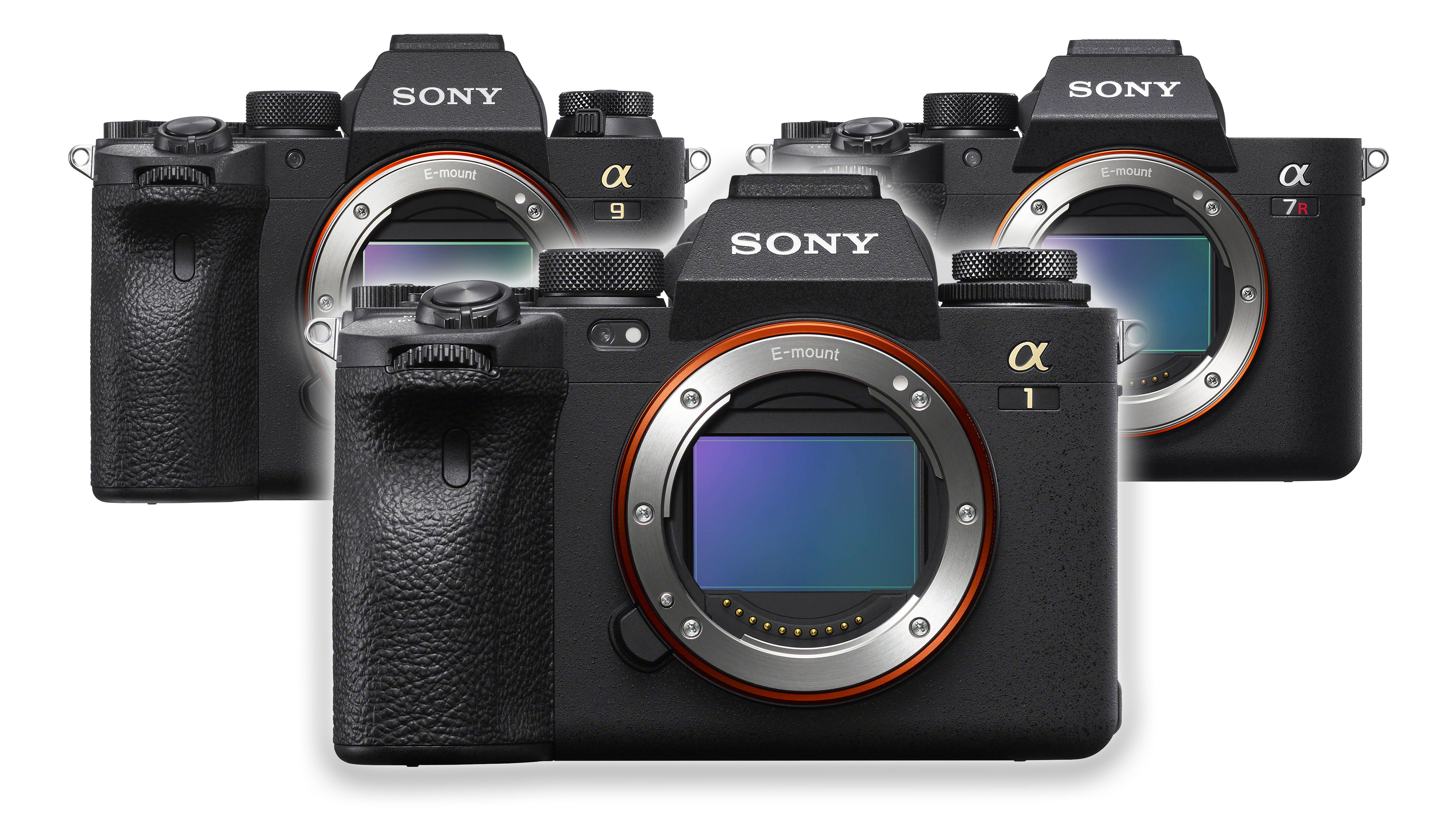Sony A1 vs Sony A9 II vs Sony A7R IV: they can't ALL be the best!
Sony’s announcement of the Sony A1 has really put the cat amongst the pigeons. Which camera should you choose now?

The new Sony A1 looks amazing, but it also creates a lot of questions. Where does it fit in the Sony Alpha range, where does it leave the Sony A9 II and A7R IV, and which of these cameras is best?
Good though the Sony A1 is, the other two cameras in this comparison still have their advantages, so let’s break down what’s new in the A1 and where the others stand now.
• Read more: Sony A7R IV vs A7R III vs A7R II
1. Sensor and resolution
• Sony A1: 50MP stacked BSI CMOS
• Sony A9 II: 24MP stacked BSI CMOS
• Sony A7R IV: 61MP BSI CMOS
All three cameras have full frame sensors. The A7R IV still has the highest resolution with 61 megapixels, while the A9 II is designed for out and out speed with a much lower 24MP sensor that’s better in low light and for high speed burst shooting.
The A1’s 50MP sensor is not far behind the A7R IV’s 60MP, but the older A7R IV is still ahead and it’s a much cheaper camera.
It’s the Sony A9 II that gets hit the hardest, as the A1 doubles its resolution and beats it for speed too. We don’t yet know the A1’s buffer capacity, but right now it looks as if the A9 II’s only real advantage is its much lower price.
Early verdict: The A7R IV is still top for resolution, but the A1 is not far behind and makes the A9 II look a little slow… but at a price.
2. Continuous shooting
• Sony A1: 30fps (electronic shutter)
• Sony A9 II: 20fps (electronic shutter)
• Sony A7R IV: 10fps (mechanical shutter)
The Sony A7R IV’s 10fps burst mode is still pretty spectacular for a camera with this resolution, but the A9 II is twice as fast and the A1 is 10fps faster again.
We don’t yet know the buffer capacity of the A1, and this is just as important as the outright burst speed, so the A9 II might still edge it for out and out action fans – it’s certainly a lot cheaper than the A1.
Early verdict: If money is no object, the A1 looks the winner here, but the A9 II could still prove the most cost effective for sports shooters. Even the A7R IV is capable of occasional high speed use – 10fps is pretty good!
3. Video
• Sony A1: 8K 30fps, 4K 120fps
• Sony A9 II: 4K 30p
• Sony A7R IV: 4K 30p
For this comparison, we really ought to include the Sony A7S III, as this is the only Alpha that can really live with the A1’s video capabilities. The fact is that the A7R IV and A9 II are fine for mid-level video work, but don’t come close to the A1’s video capabilities.
Of course, the A1’s headline spec – 8K 30p video recording for up to 30 minutes – may not be entirely practical, even if Sony has found a way to control heat build up effectively, but even if you can’t immediately find a need for 8K video, you’re sure to be impressed by the 4K 120p option. For video, the Sony A1 is an absolute beast.
Early verdict: The Sony A7R IV and A9 II are perfectly serviceable 4K video cameras, but the Sony A1 is in a different league entirely.
4. Price and practicality
• Sony A7R IV: $3,498 / £2,899 / AU$5,299
• Sony A9 II: $4,498 / £3,999 / AU$6,799
• Sony A1: $6,498 / £6,499 / AU$10,499
The figures speak for themselves. The Sony A7R IV is not just the highest resolution full frame camera you can buy, it’s also the cheapest of this trio. If resolution is what you need combined with occasional 4K video, the A7R IV is still unchallenged, even by the awesome A1.
The A9 II is in a tight spot. It’s not really a video camera any more than the A7R IV, and if your budget stretches this far then the A7S III would be a better video buy.
The fact is, the A1 is an awesome camera, but only when you take ALL of its capabilities into account. The A7R IV offers more resolution for less, the A9 II is fast (not AS fast, but fast) at a much lower price, and if 4K video is all you need, the A7S III is cheaper.
But if you want the best of EVERYTHING, the Sony A1 just knocked the ball out of the park.
How we test cameras
Why you can trust Digital Camera World
We test mirrorless and DSLR cameras both in real-world shooting scenarios and in carefully controlled lab conditions. Our lab tests measure resolution, dynamic range and signal to noise ratio. Resolution is measured using ISO resolution charts, dynamic range is measured using DxO Analyzer test equipment and DxO Analyzer is also used for noise analysis across the camera's ISO range. We use these real-world testing and lab results to inform our comments in buying guides. For compact cameras and phones, we judge on real world handling and photographic results alone.
Read more:
• Best Sony cameras
• Best mirrorless cameras
• Best professional cameras
Get the Digital Camera World Newsletter
The best camera deals, reviews, product advice, and unmissable photography news, direct to your inbox!

Rod is an independent photography journalist and editor, and a long-standing Digital Camera World contributor, having previously worked as DCW's Group Reviews editor. Before that he has been technique editor on N-Photo, Head of Testing for the photography division and Camera Channel editor on TechRadar, as well as contributing to many other publications. He has been writing about photography technique, photo editing and digital cameras since they first appeared, and before that began his career writing about film photography. He has used and reviewed practically every interchangeable lens camera launched in the past 20 years, from entry-level DSLRs to medium format cameras, together with lenses, tripods, gimbals, light meters, camera bags and more. Rod has his own camera gear blog at fotovolo.com but also writes about photo-editing applications and techniques at lifeafterphotoshop.com
